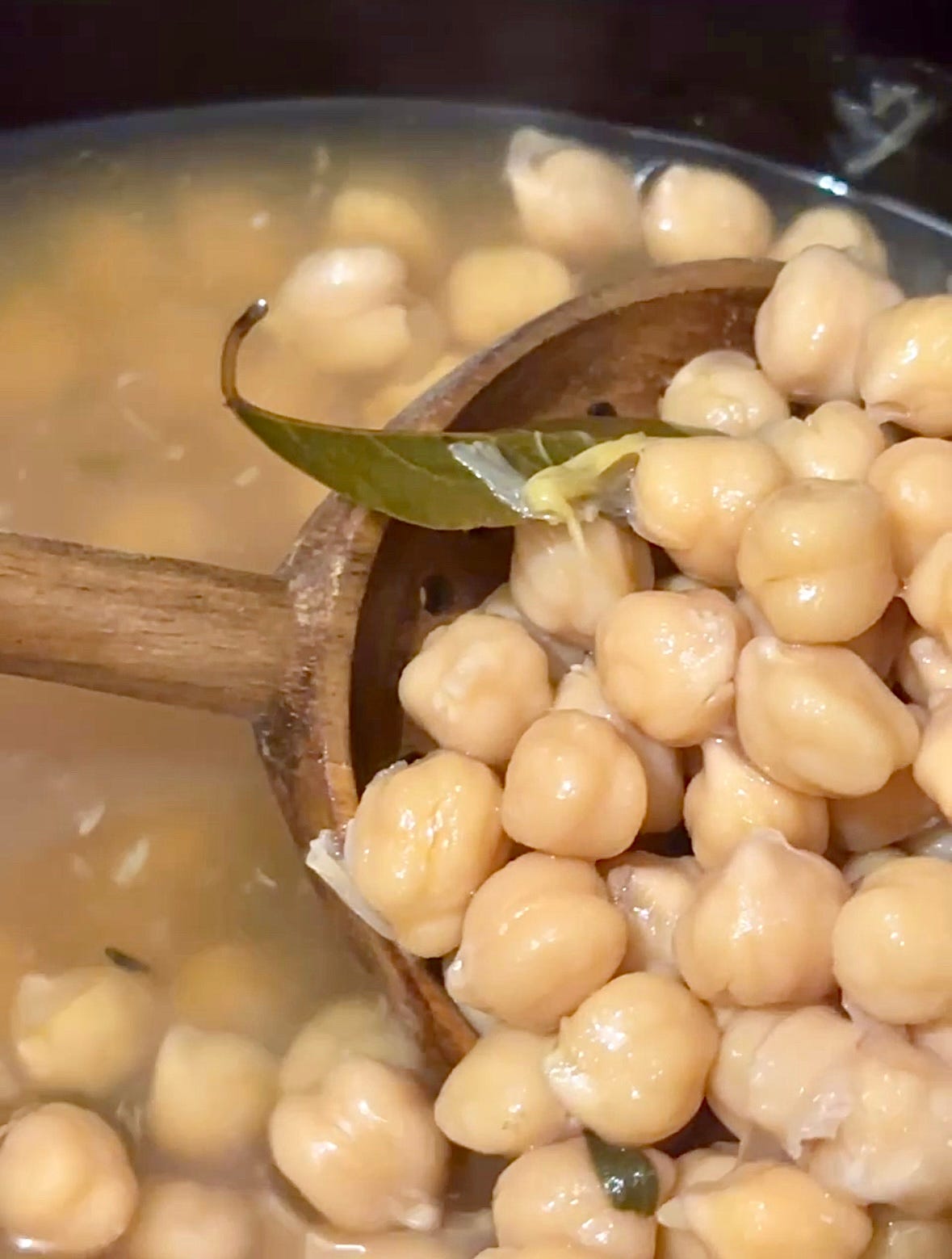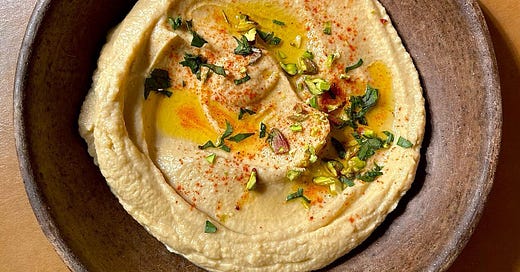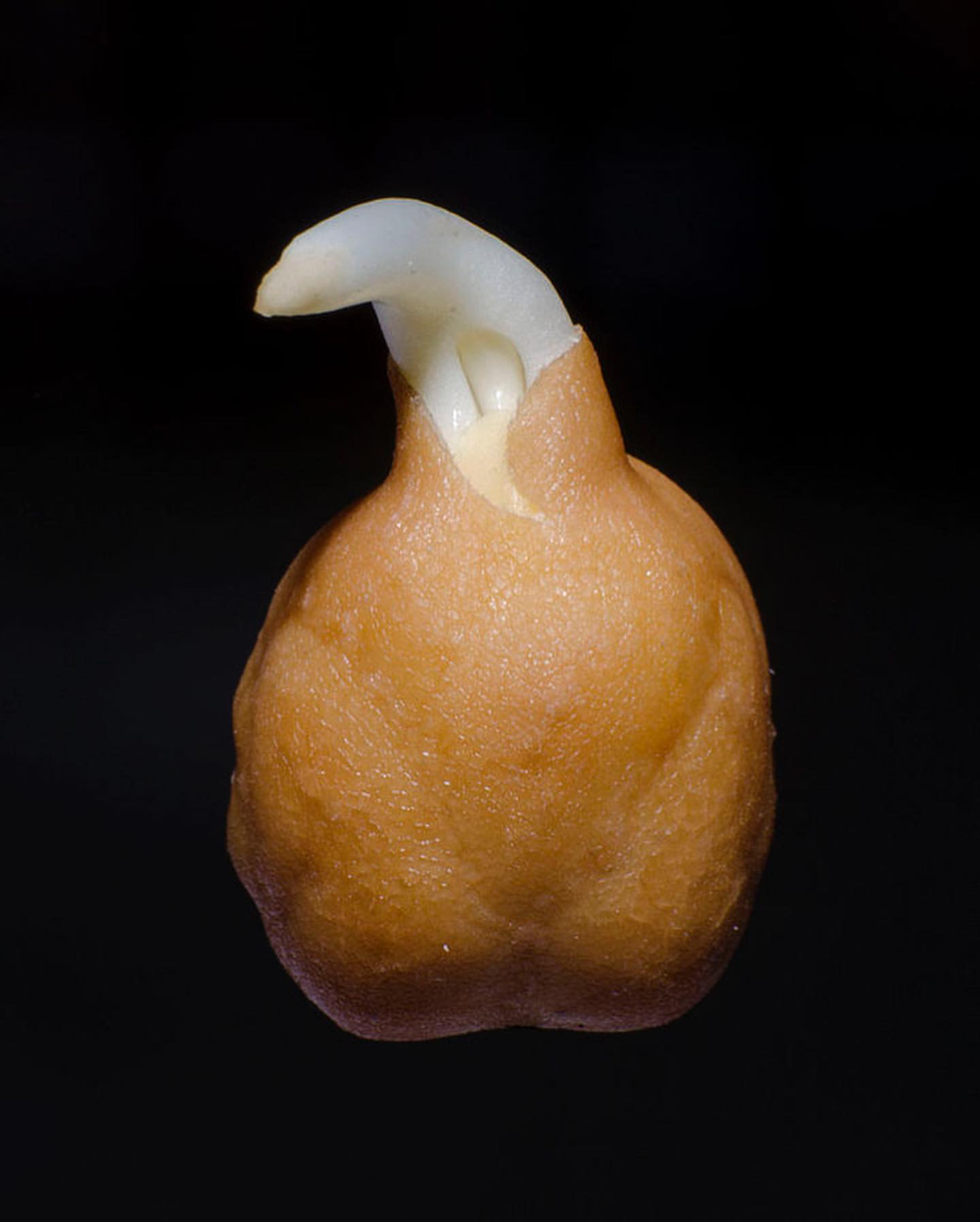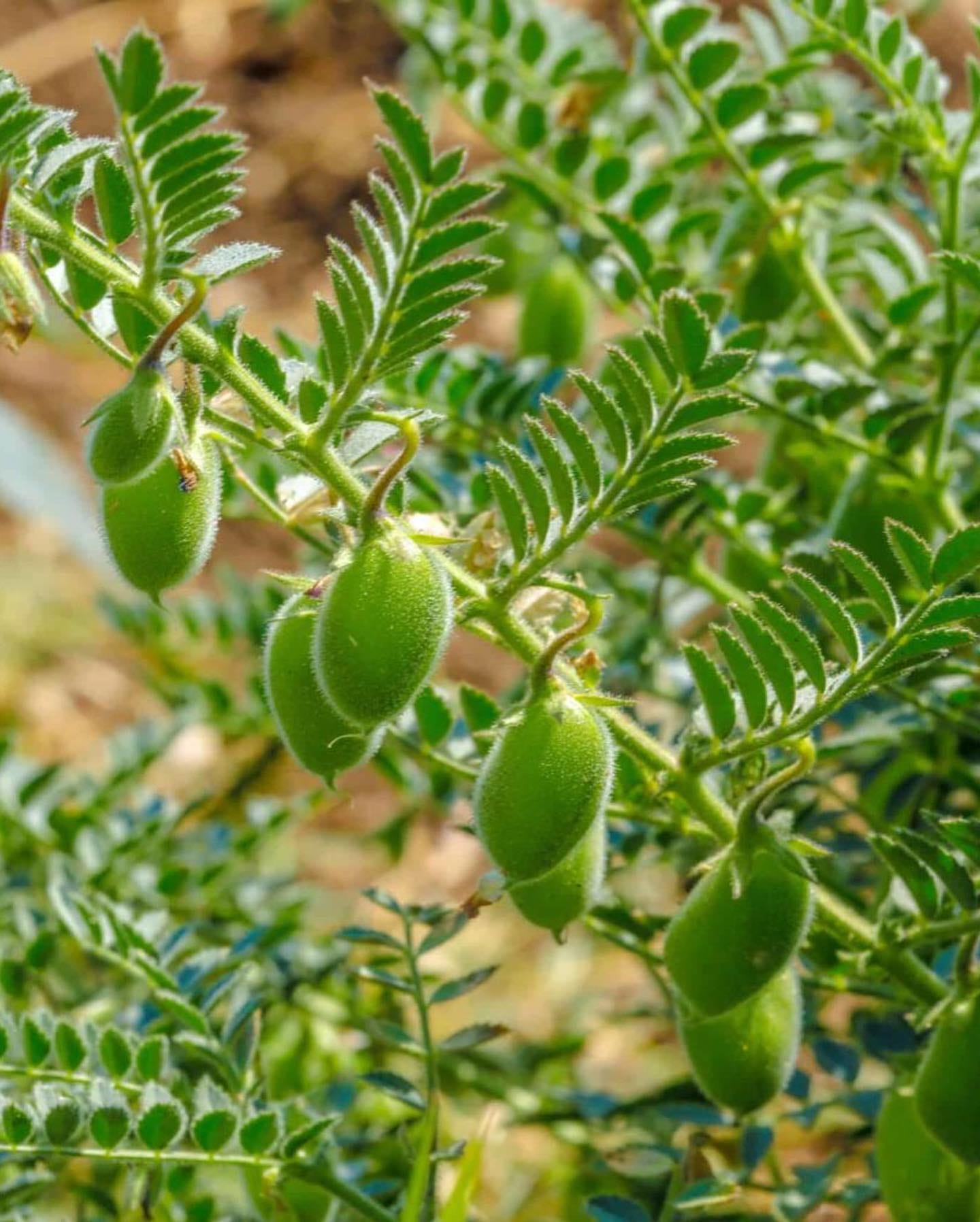Is Hummus Israeli? Culinary Erasure of Palestinian & Afro-Arabic Cuisine
a brief history of the chickpea, hummus & a pistachio-crusted recipe
Culinary appropriation.
As a Syrian, Palestinian, Egyptian and Lebanese staple, the re-marketing of hummus as "Israeli" food has set off warranted culinary discourse. The hummus debate sits at the borderlands of culture, remembered history, and politics. This creamy, humble, yet rich and beloved dish of Middle Eastern and Afro-Arab roots, stretch back to ancient Egypt and the Levant.
Calling out the appropriation of hummus by Israel may seem petty and trivial but this topic strongly intertwines with the larger political narratives that affect actual life.
Writers of the cookbook, The Gaza Kitchen, Laila el-Haddad and Maggie Schmitt, detail some inaccurate Israeli food myths by telling the story of the many Ashkenazi Jews who immigrated to Palestine in the early 20th century and did not grow up sharing hummus, falafel, or za’atar on their heritage tables. The new adoption and rebranding of these dishes became part of a broader nation-building effort. One that downplayed or erased the Arab and Afro-Arab origins of these foodways. The claiming of a dish as Israeli when it is not ignores the culinary culture that existed for millennia before the state of Israel.
Over time, these foods were adopted and rebranded to construct a cohesive national identity in the larger plan to exterminate all of Palestinian culture.
This nuanced phenomenon is bigger than hummus.
The Washington Post’' Here's why Palestinians object to the term 'Israeli food' continues to emphasize that presenting Palestinian dishes as Israeli denies Palestinian contributions but also erases their history and existence along with its actual people.
In the highly intellectualized (anti-intellectuals should feel free to stop reading here) concept of gastro-colonialism that has been discussed in hot take culinary academic circles, refers to the appropriation and commercialization of indigenous foods by dominant cultures. This process often tracks with the commodification of traditional dishes and strips them of their context and cultural significance. It’s often accompanied by destructive deforestation and over-taking of indigenous farmland and agricultural practices that are replaced with colonial mono-agricultural methods—eventually making the land barren while wiping out cultural foodways quite literally from seed.
Is Hummus Afro-Arab?
The sanitization of hummus flattens Gazan plates of hummus bi tahina حمص بالطحينة meaning “chickpeas with tahini”; Egyptian Bowla of ful طبق فول مدمس", ṭabaq fūl midammis or ful medames—a traditional dish of Sudan, Syria and Egypt of tender slow-cooked fava beans seasoned with fresh herbs, lemon garlic sauce and cumin—traditionally eaten for breakfast.
To fully examine the history and roots of hummus, we should also dig a lil bit into the chickpea as a plant. These chubby, chonky nurturing legumes are among the OG plants cultivated in human civilization. Chickpeas are some of the first legume cultivars on our planet, alongside ancient cultivated foods like figs, wild grains, taro and rice. And an even more spicy and interesting fact that you didn’t ask for: before we seeded, grew and harvested much of the foodways mentioned above—we were already propagating weed aka cannabis aka hemp before most of the food we eat today. It says a lot about human priorities and I love that.
Chickpeas seeds throughout time
Some historians suggest that the oldest known traces of chickpeas were found in Çayönü, Turkey and Jericho, Palestine in 7500 BCE. In Deir el-Medina, Egypt, an entire bowl of chickpeas were left as a post-mortal gift in 1400 BCE—only noteworthy to anthropologists as legumes are said to be a very rare tomb offering.
From there, the species of the chickpea plant moved through ancient trade and migration routes through the Mediterranean, Egypt, Ethiopia, and later Western Asia where chickpeas were and still are brilliantly used in Pakistani, Indian, and Bangladeshi platos.
In Arabic, chickpeas are referred to simply as hummus “حمص” . While garbanzos, the Spanish word for chickpea widely used in English, is cleverly derived from the Italian word ceci (pronounced “chee chee”) derived from Latin, Cicer arietinum. It’s a spindly linguistic mashup for absolutely no reason and in many ways solidifies Noam Chomsky’s theory that some languages, specifically romance languages are merely variations and dialects of each other.
The cultural and linguistic ties to this humble legume has reached across a vast and fertile world for us to enjoy today.

Green chickpeas are simply fresh—picked young before they dry and turn golden. They’re sweeter, delicate, and tender. The creamy colored type, that we commonly use for most hummus and chickpea recipes, are just mature and bigger. Both are excellent and should be cooked.
As cultivars, chickpeas are fairly easy to grow and are drought friendly. The next time you’re cooking dried chickpeas, set a couple aside and try to sprout, eat and grow indoors until it’s ready to be planted in an established outdoor garden (alongside cucumbers, beets, potatoes or strawberries). It only needs sun, well drained soil and a little attention. This action to me is a precious reminder that even in a world set out to erase culture, something ancestral and ancient can still grow today. It’s a tiny way to keep a culture alive while it’s actively being erased.
The Recipe —
Pistachio crusted hummus
yields: 6 servings
cooking time active 25 mins 2-8 hours to slow cook beans
This chickpea hummus recipe takes about 10 minutes (but to cook chickpeas, you’ll need from 3-7 hours to slow cook). I used leftover homemade tahini I made a couple weeks ago but you can still make it without or with store-bought tahini)
What you need:
500g / 2 cups of dried or cooked chickpeas
2 Large Garlic Cloves
1 Large Lemon or Lime, juiced
5 Tbsp Olive Oil
1 Tbsp Tahini (recipe)
1 Tsp Paprika
1 Tsp Sesame Oil *optional
1 Tsp infused olive oil *optional
Salt to taste
1/4 cup hot water
1 small handful of beet greens + pistachios to garnish
What to do:
For dried, raw chickpeas: In a slow-cooker, crockpot, or large pot, bring dry chickpeas, fresh herbs, a clove or two of garlic, and bay leaves to a low simmer.
When it reaches a steady medium simmer, let it slow-cook for 4-8 hours. (8 hrs on low heat / 4 hrs on medium to high heat). Check at the 4 hour mark for tenderness and continue to cook accordingly.
If using the water for aquafaba, do not season. If you’re not going to use the broth, go ahead and add a fat of choice (oil or ghee), salt, and paprika to taste.
Once chickpeas are done, let it cool to room temperature.
Add chickpeas, 1/2 of the olive oil, tahini (and some of the or extra sesame oil and lemon if you don’t have tahini), and small amounts of filtered hot water, or chickpea broth aka aquafaba into a food processor or high powered blender.
Blend and continue to slowly add salt to taste, olive oil and or chickpea broth to get a creamy consistency.

Save this broth aka aquafaba — it lasts up to 5 days in the fridge for vegan froth for mocktails and meringue deserts. 
blended chickpea with homemade tahini and a lil lemon for extra creamy texture When it reaches a chunky yet smooth texture, add garlic, lemon or lime juice more paprika, blend until buttery smooth.
Serve in a shallow bowl using the back of a spoon to flatten and add divots and pockets to drizzle more olive oil.
Gently crumble toasted pistachios, and finely chopped parsley, mint, or cilantro. (whatever nuts or fresh aromatic herbs you have available to you) and enjoy with raw veggies, pita, falafel, on sandwiches, everything. Go off.













Just the title itself drew a "f yea" and reminds me how the homogenization/subsuming of culture occurs in a people who only know how to extract
The actual chick pea itself is so beautiful, loving these photos, this was such a good read with good flow.